Making Textile Fragment Storage Mats
At The Cleveland Museum of Art, textile fragments are stored flat in storage mats made using a design innovated in-house by a former CMA textile technician, Beth Wolfe, cleverly incorporating a crepeline silk window that allows the fragment inside the mat to be seen without having to open the folio, as well as safely flip the fragment to be viewed from the back without removing it from the mat. The textile fragment inside additionally sits on a loose piece of cotton muslin on top of a second muslin adhered to the backboard, allowing people to lift the textile fragment from the mat without having to actually touch the fragment itself.
Under the guidance of textile and paper technician, Carla Fontecchio, I learned how to measure the mats, cut them out on a CNC cutter, and assemble them. The storage mats are made in advance and left to sit out for a period of time before actually storing the textiles in them.
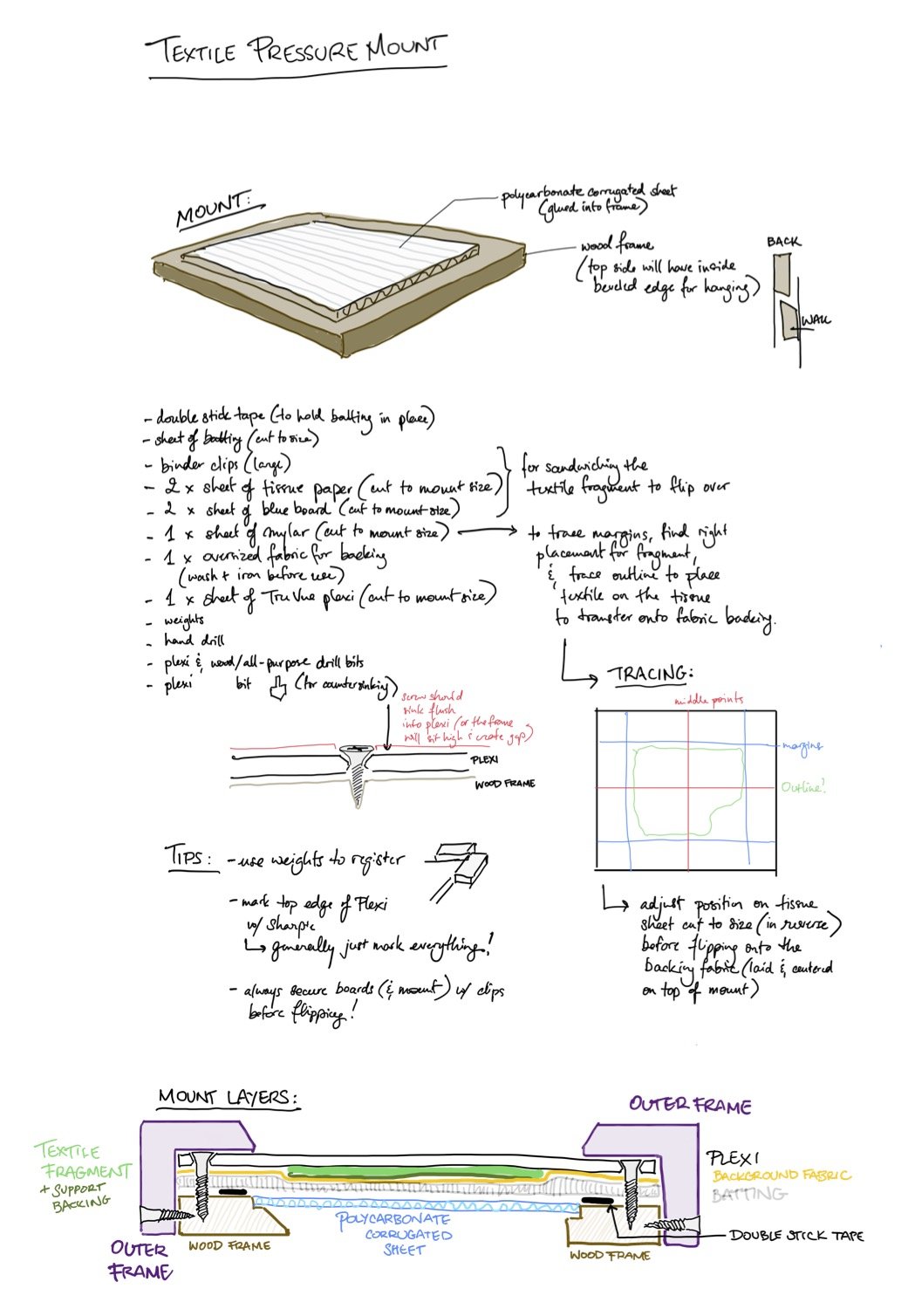
My illustrated notes from the process.
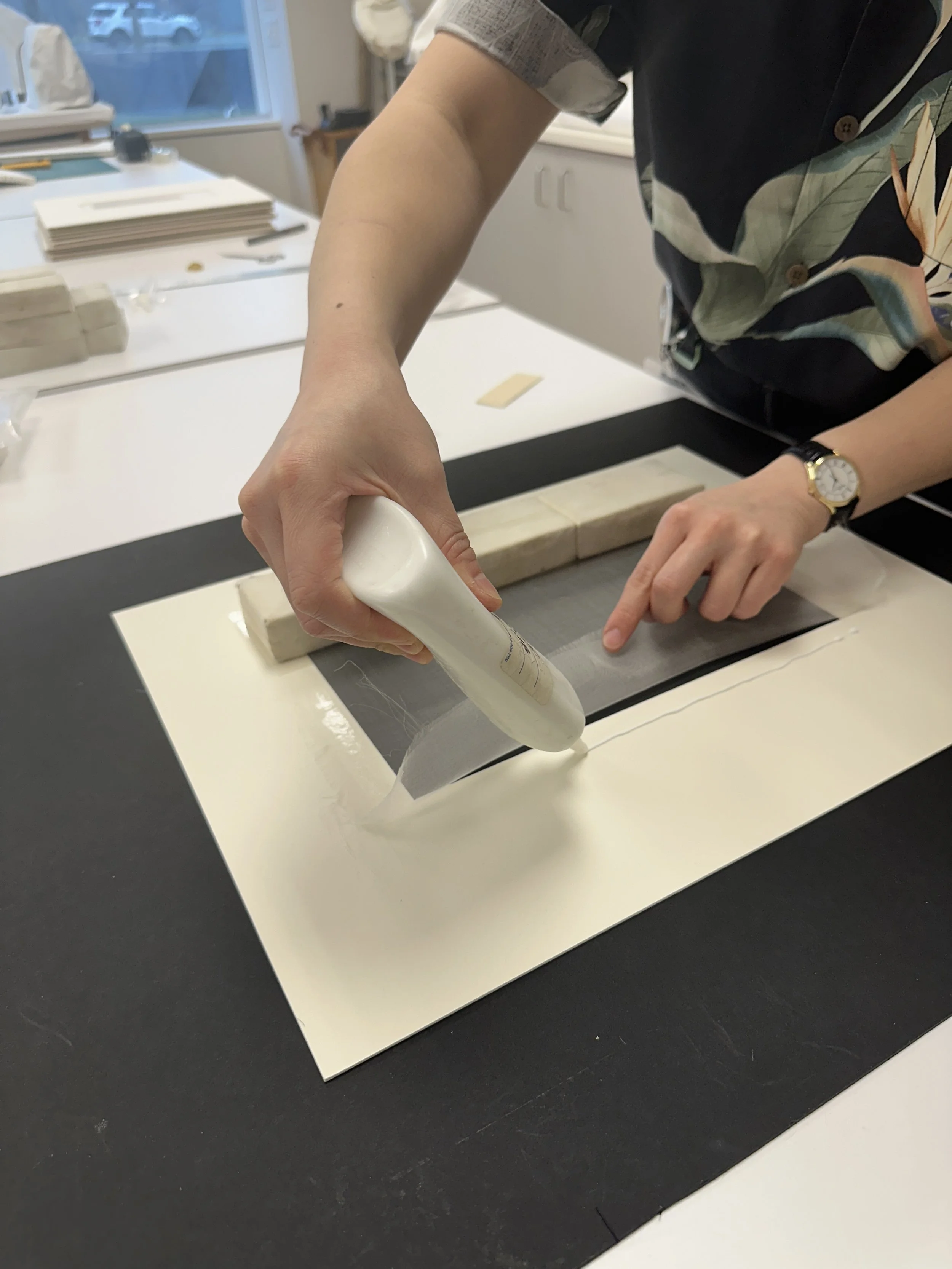
Laying down the line of PVA glue for the crepeline window. (Photo: Carla Fontecchio)

Smoothing down the PVA glue to a flat, even surface. (Photo: Carla Fontecchio)

Working on the mats. (Photo: Carla Fontecchio)

Stretching out the length of the crepeline window while the adhesive is still wet. (Photo: Carla Fontecchio)
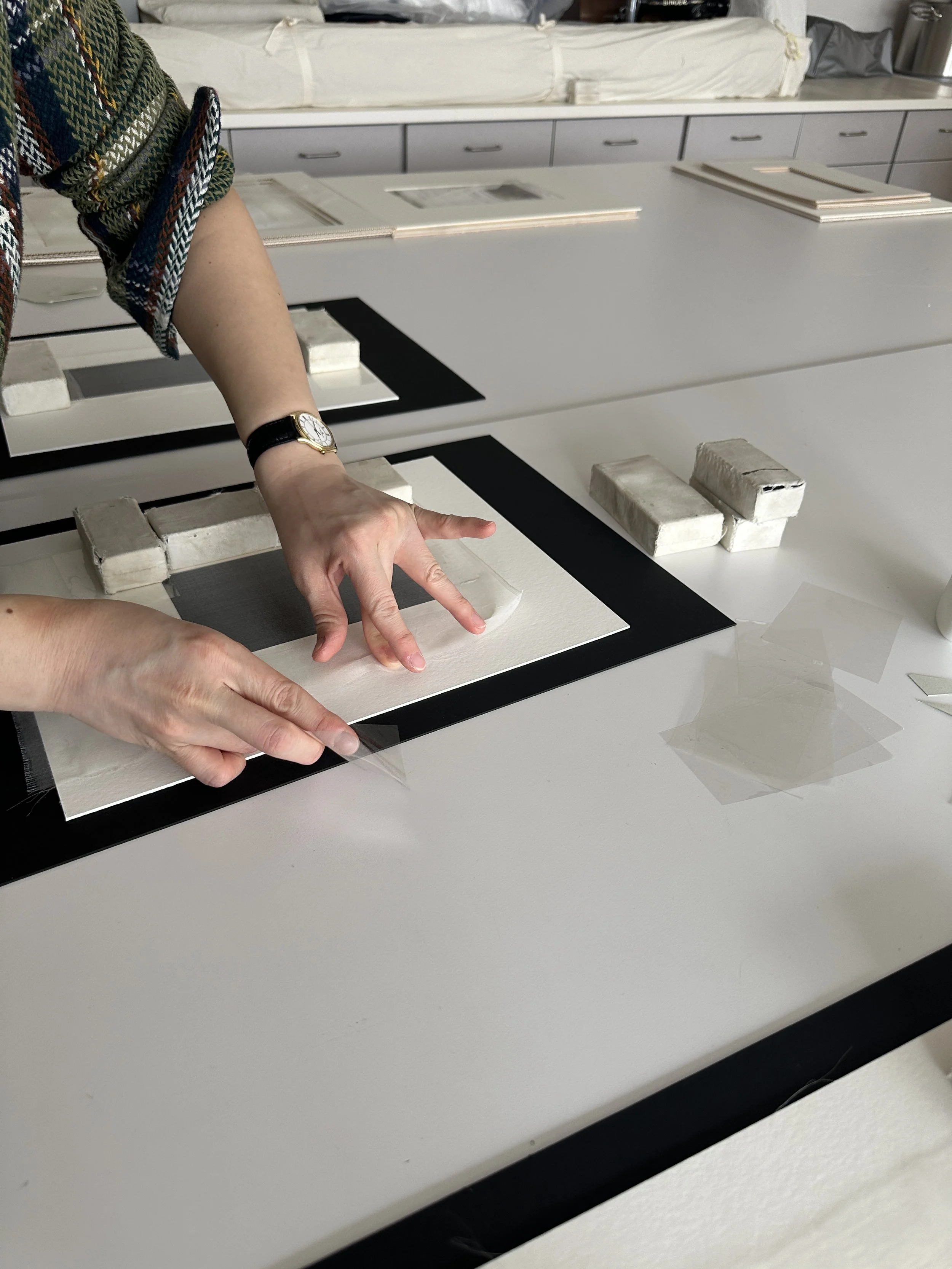
Stretching out the sides of the crepeline on the window while the adhesive is still wet. (Photo: Carla Fontecchio)
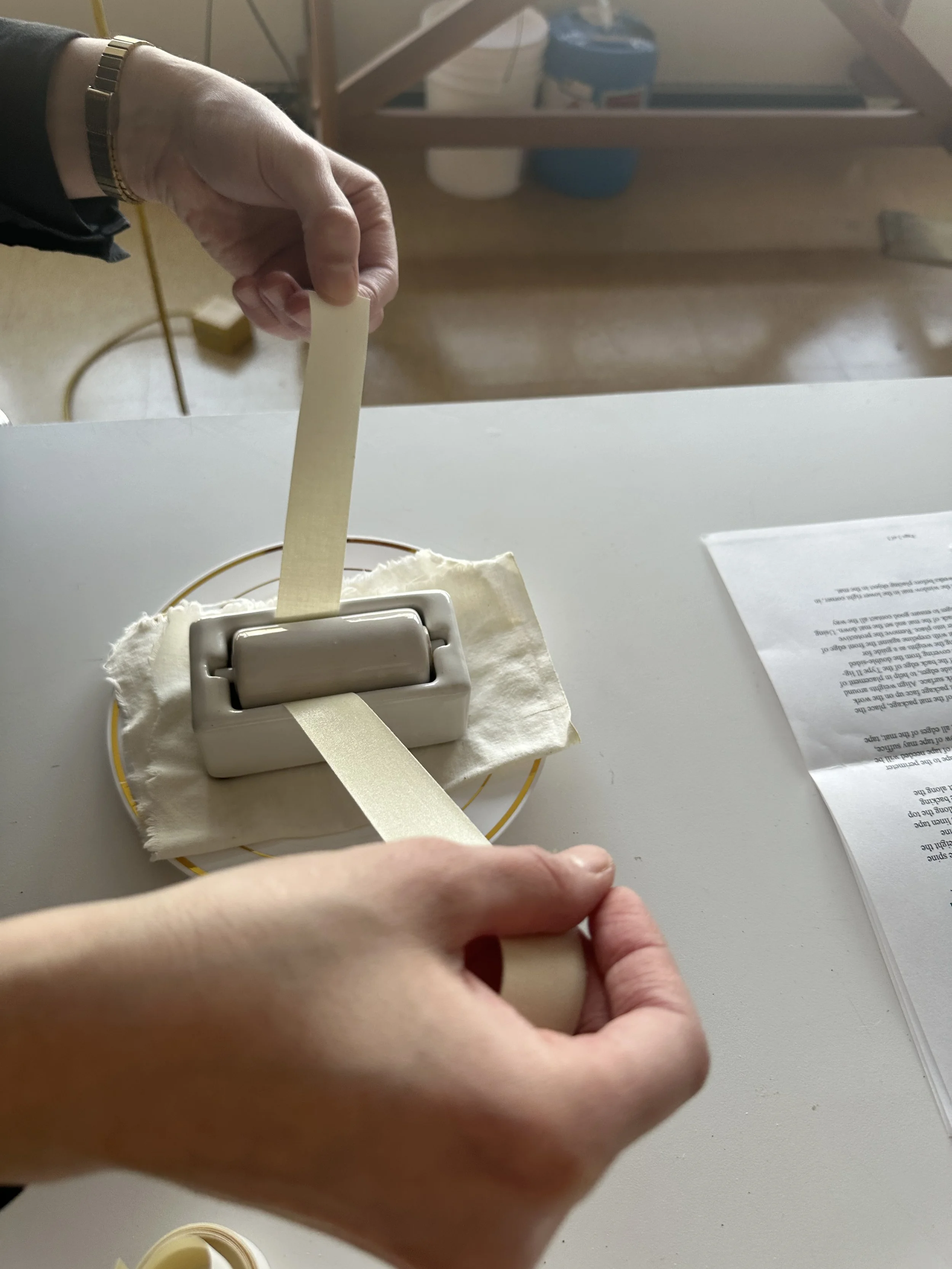
Carla preparing the linen adhesive tape for the spine of the mat. (Photo: Jennifer Kim)
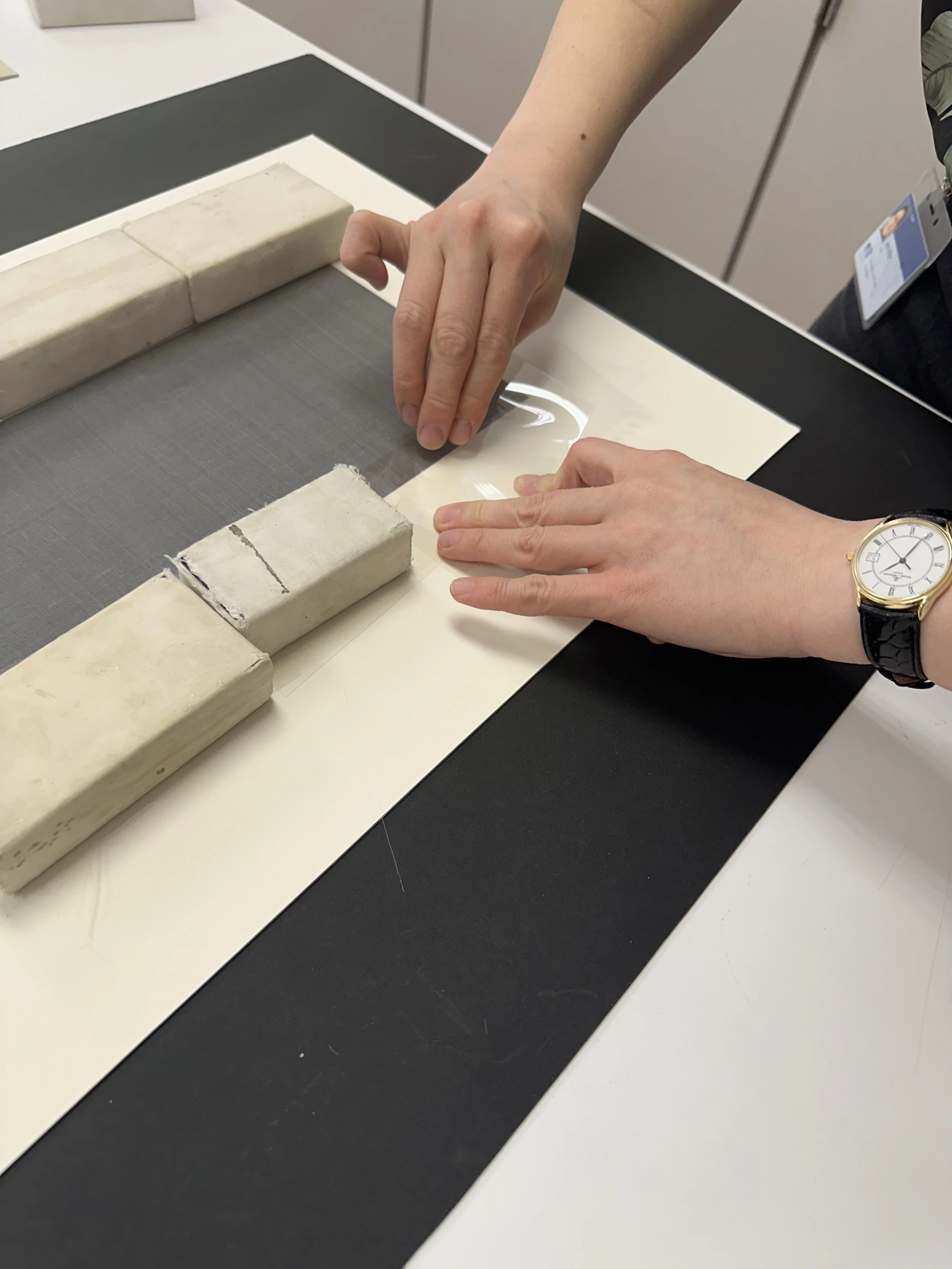
Laying down the mylar on the still-wet adhesive and crepeline. (Photo: Carla Fontecchio)
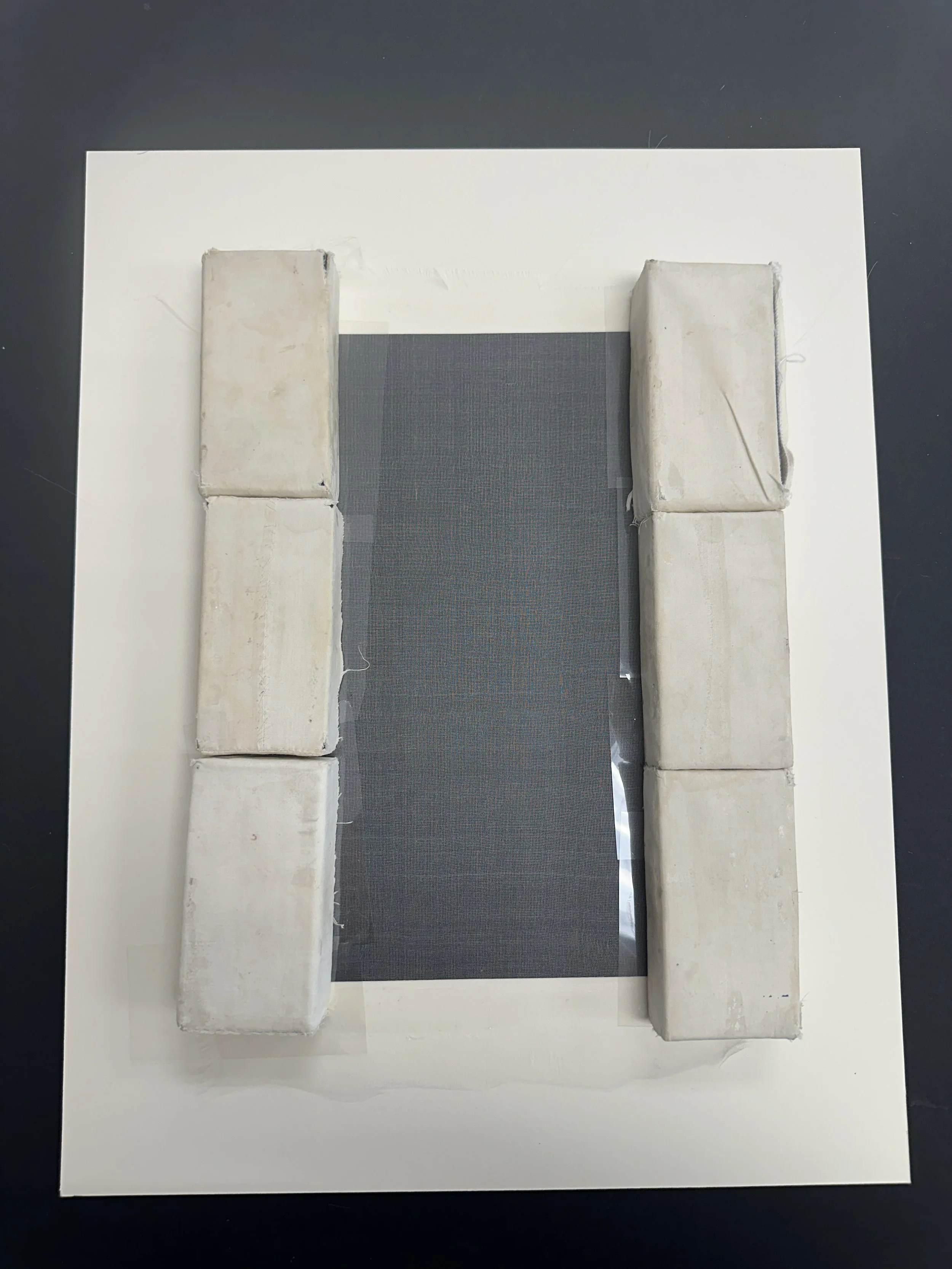
Drying under weights to hold the crepeline in place. (Photo: Jennifer Kim)

Peeling the mylar off the dried adhesive. (Photo: Jennifer Kim)
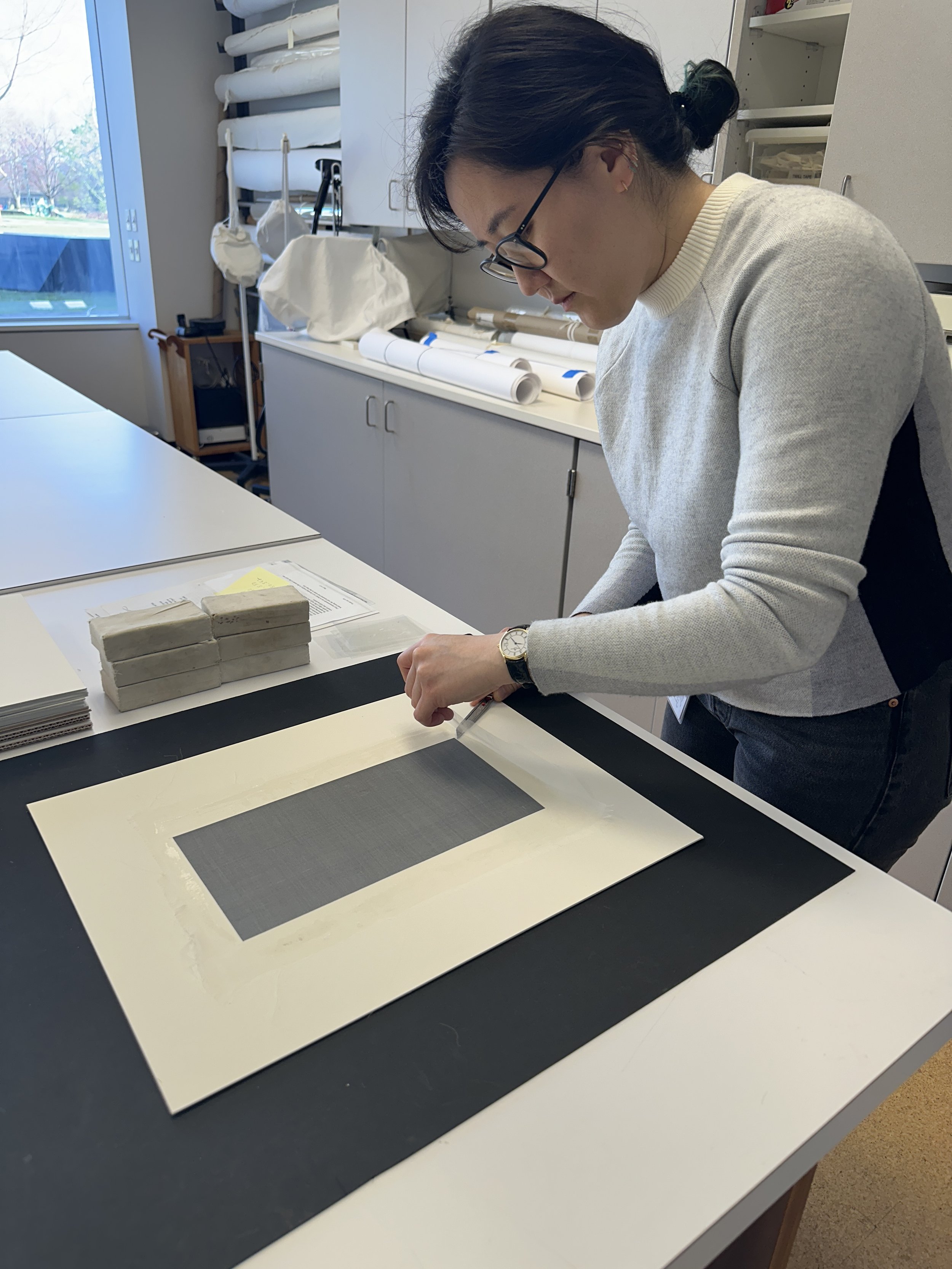
Cutting off the excess crepeline along the edges with a sharp blade. (Photo: Carla Fontecchio)

The finished crepeline window before adhering it to the mat. (Photo: Jennifer Kim)

Placing the mat with the crepeline window onto the support layer of the cover mat. (Photo: Carla Fontecchio)
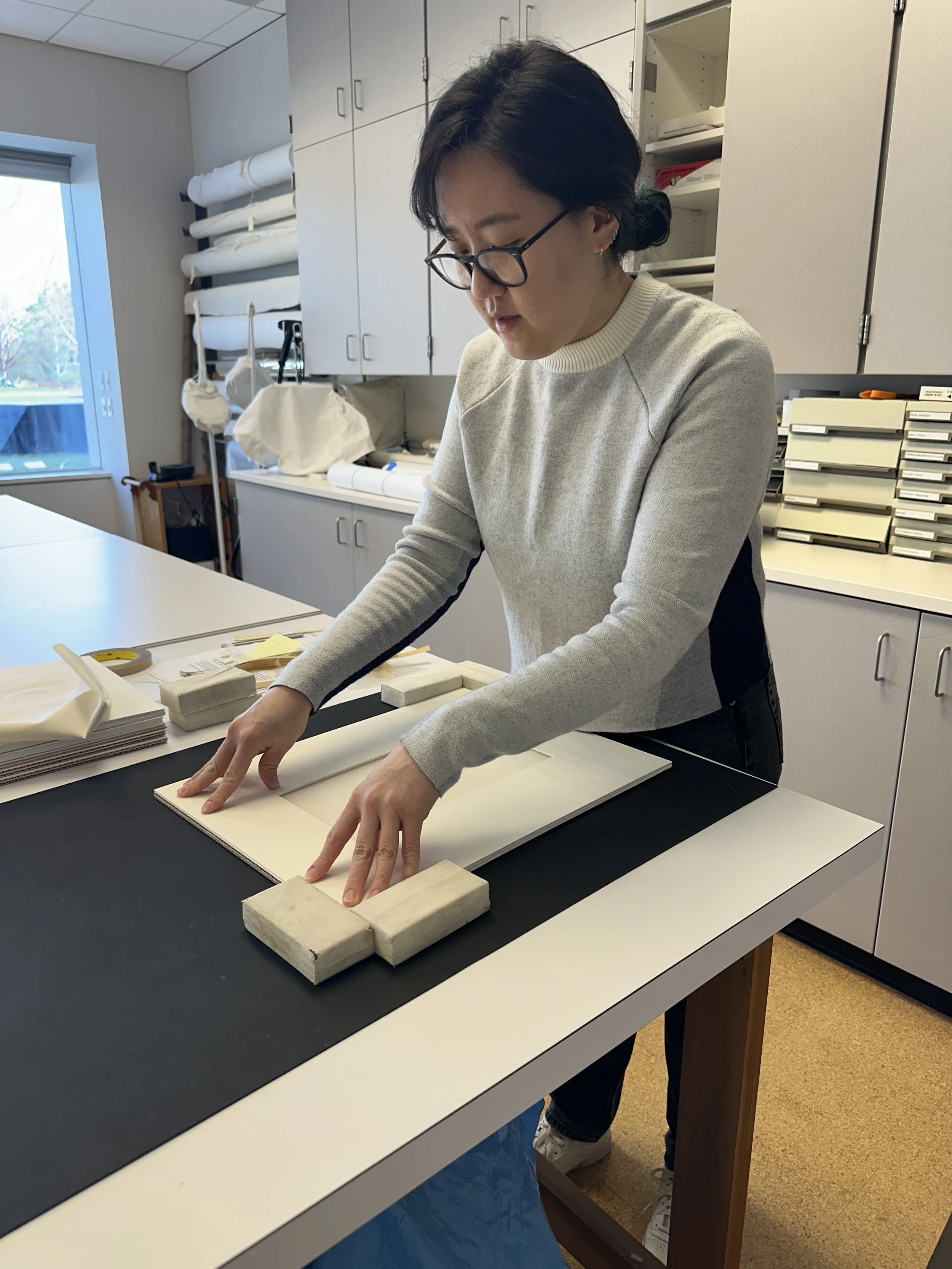
Pressing down to adhere the cover mat elements together. (Photo: Carla Fontecchio)
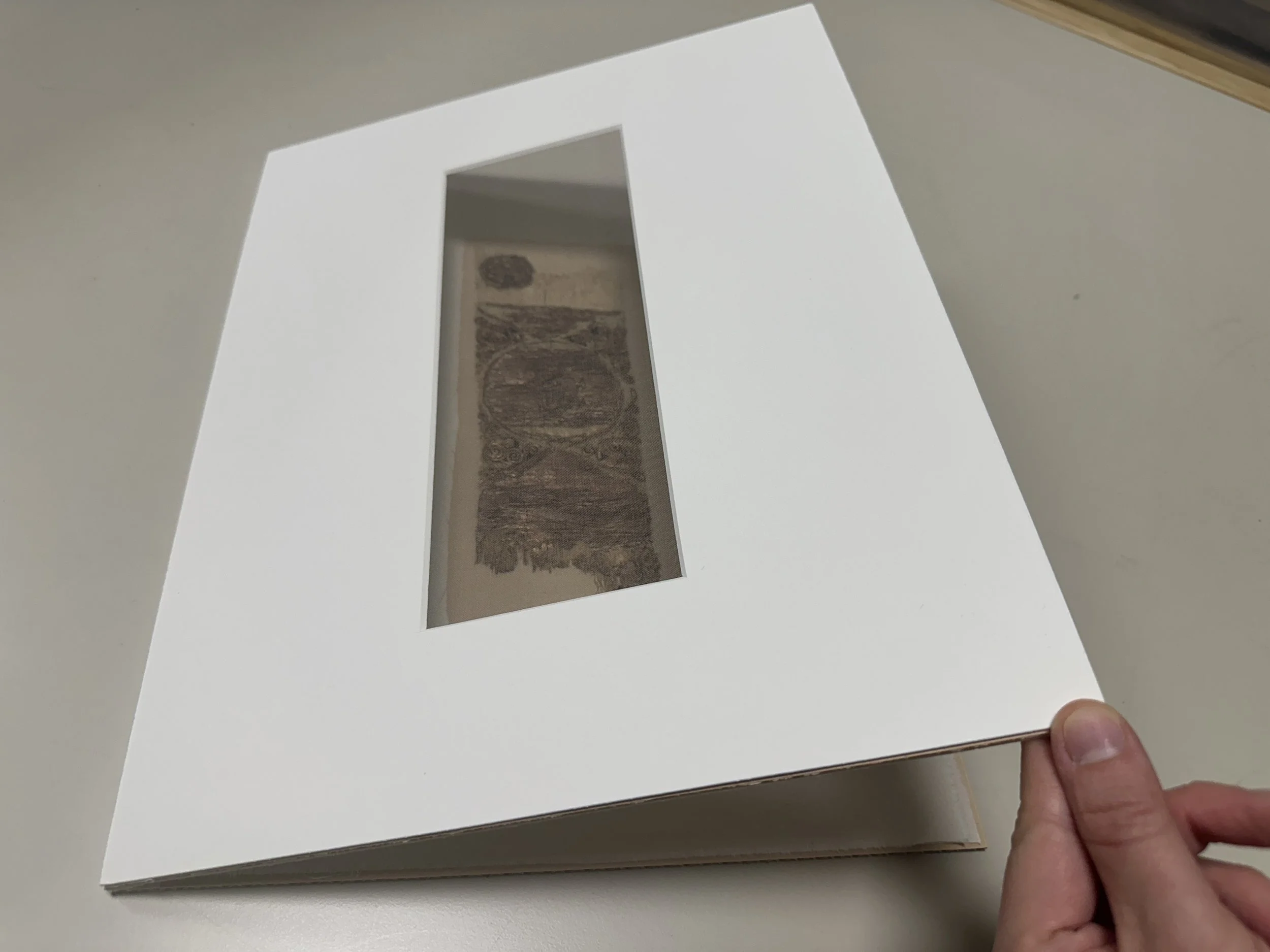
The finished product. (Photo: Jennifer Kim)
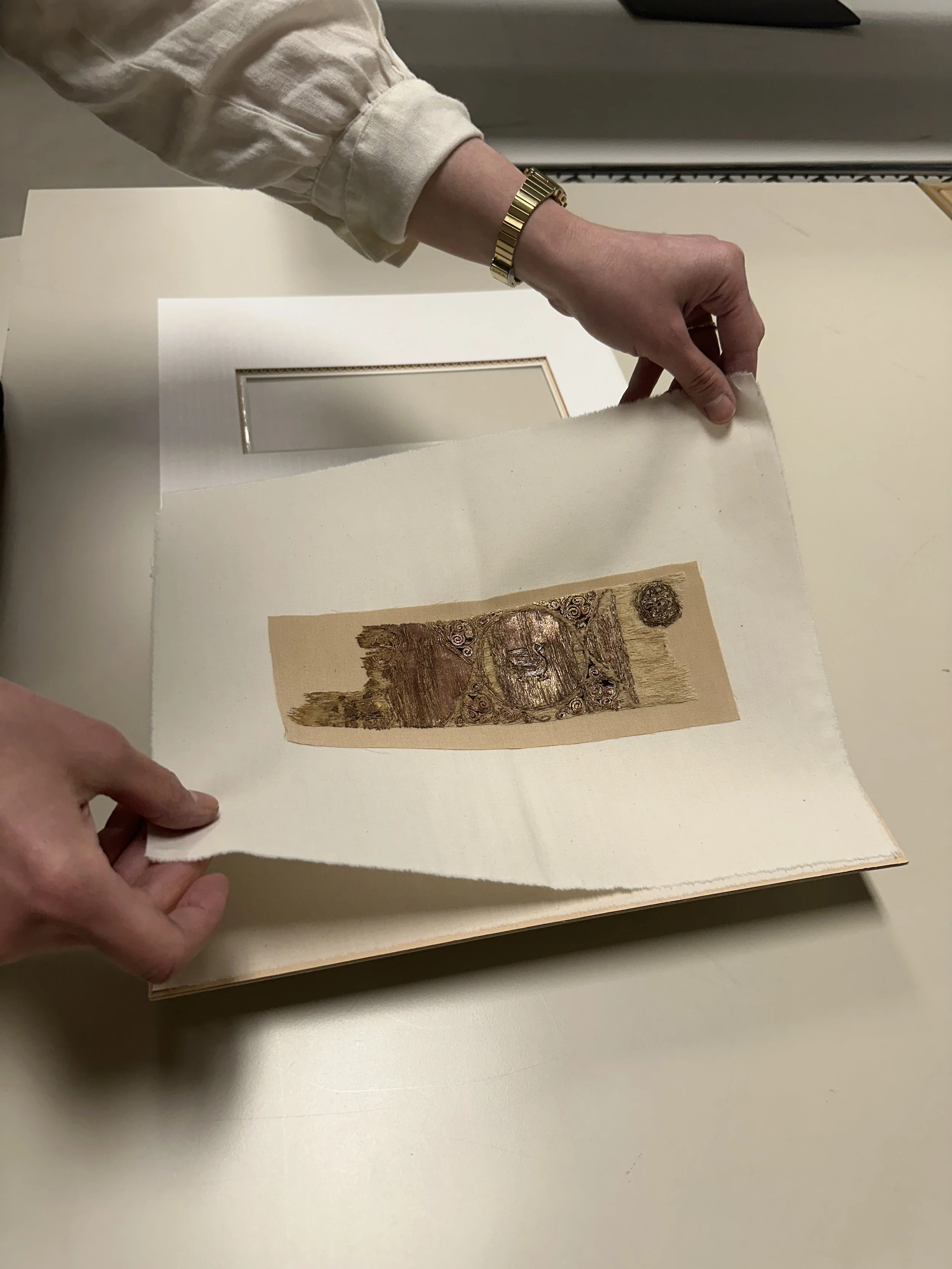
Carla demonstrating how the textile fragment can be handled without touching it directly with the new mat. (Photo: Jennifer Kim)